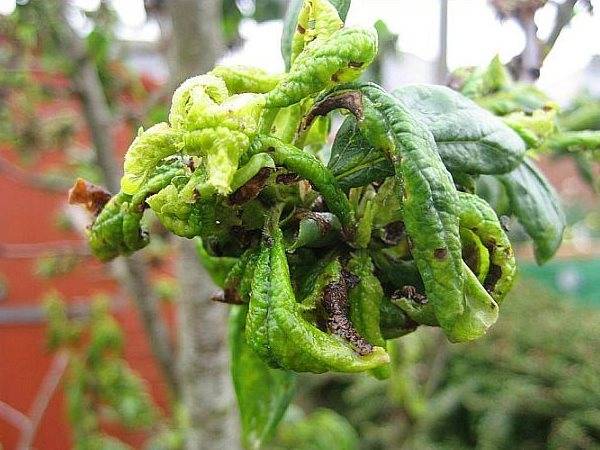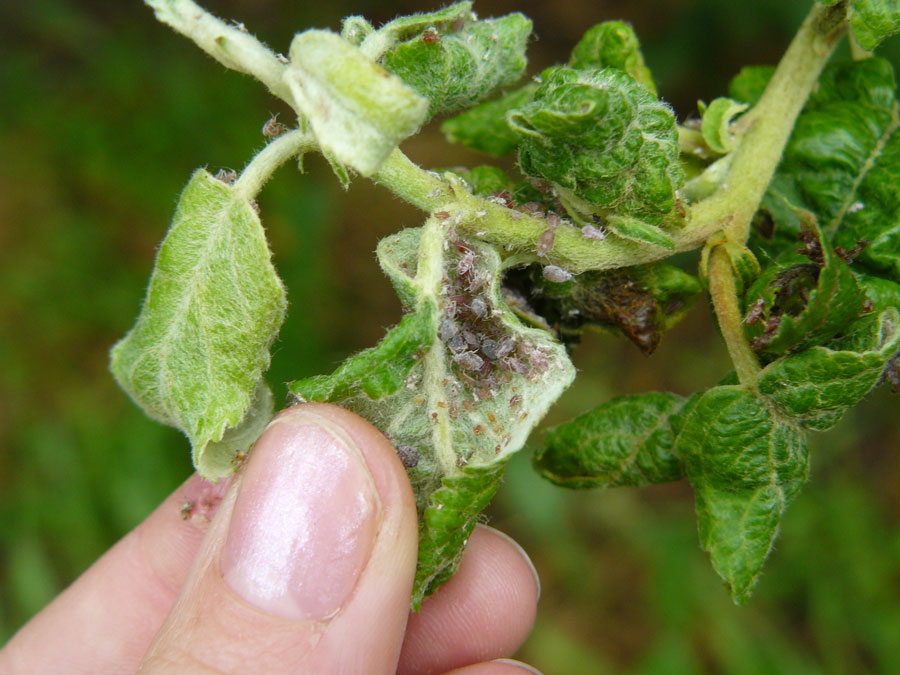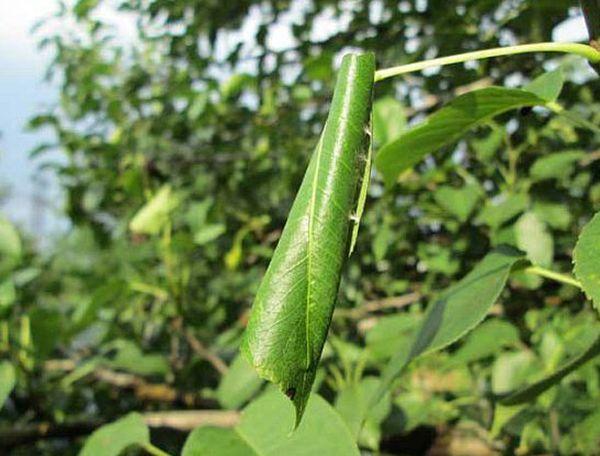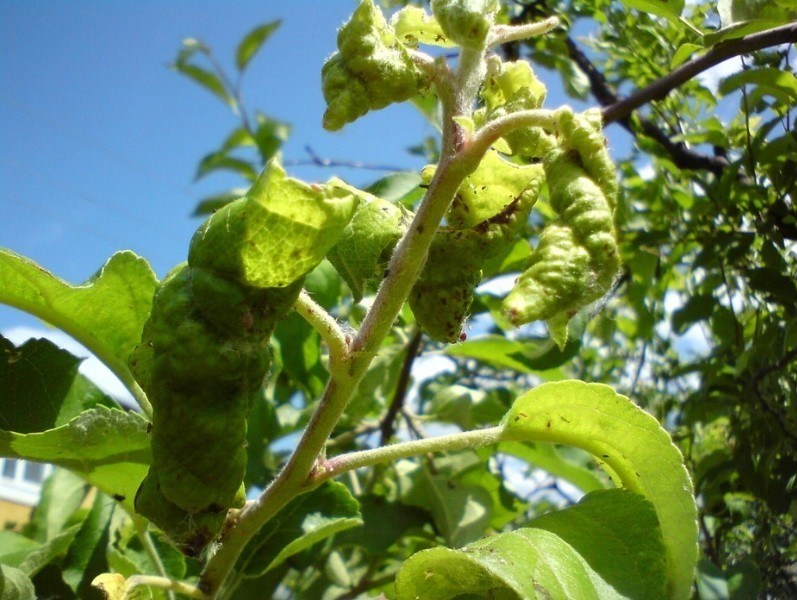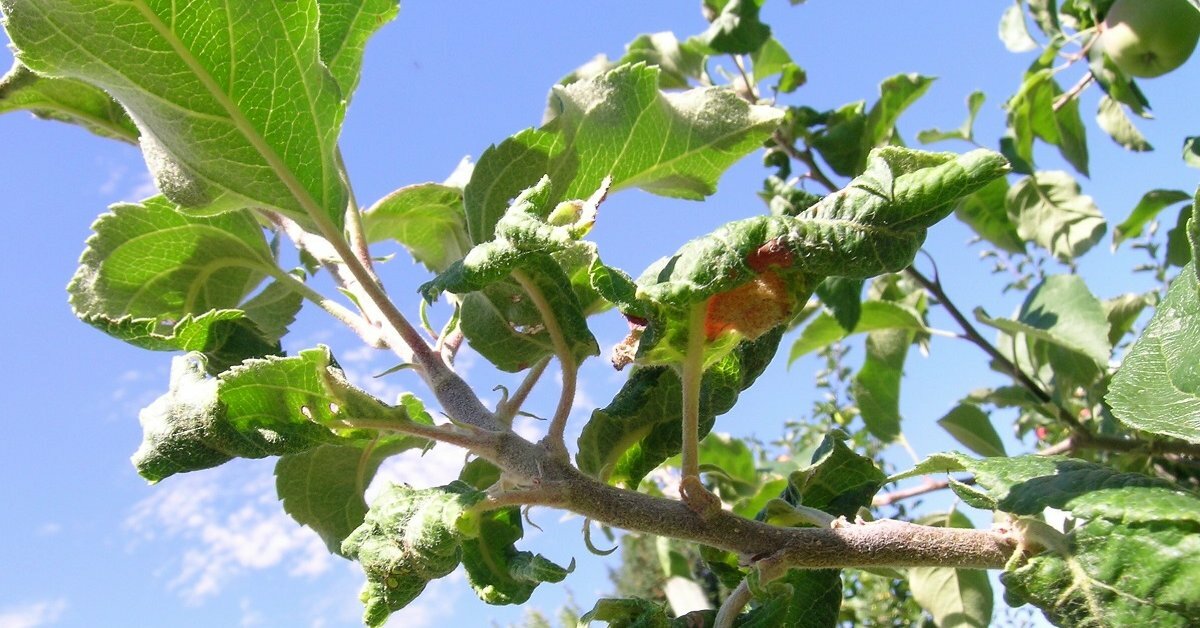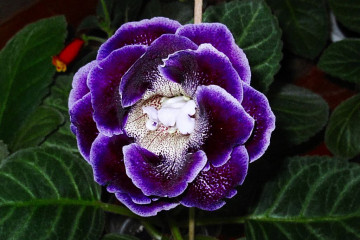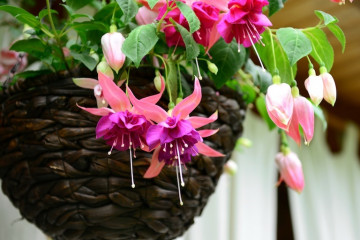Leaves curl on the pear - how to process
Content:
The pear is a popular crop that, if properly cared for, can yield a wonderful and bountiful harvest. However, in some cases, plants can be damaged by various diseases. Not many summer residents know when leaves are curled on a pear, how to process them so that the culture does not die. You can cope with the problem by accurately determining the cause of its occurrence and using special means, both chemical and folk.
Why do pear leaves curl
If pear leaves curl up into a tube, the reasons may be different. Diseases and harmful insects can provoke a similar phenomenon. The main factors are:
- Nutrient Deficiency. In some cases, the lack of useful elements can lead to twisting of the leaves and branches of the tree. It is recommended to pay attention to the various dressings - they may be applied irregularly or not balanced enough. The state of the culture is affected by the lack of boron, phosphorus, calcium. To cope with this problem will help the regular introduction of complexes with missing elements into the soil.
- Fungal diseases. Diseases caused by fungi often develop in humid and warm climates. The most famous pathologies are scab, fruit rot, cytosporosis, various types of cancer, powdery mildew, and sooty fungus. Unfortunately, the causative agents of such diseases calmly wait out the winter in the cracks in the bark of the tree, and in the spring (in April, May) they begin to infect the plant. In this case, leaves, fruits, branches can suffer. Only special drugs will help to cope with the problem.
- Bacterial diseases. The bacteria most often get on the tree in the rain. In this case, both adult plants and very young ones suffer. The leaves curl and the bark becomes very dark in color and looks charred. The most common diseases are root cancer and fire blight. You can prevent such a problem with the help of timely disinfection and treatment with special preparations.
- Viral diseases. Viral diseases are considered the most unpleasant. Initially, you may not even know that the pear is affected by them and is sick. However, after a while, the leaves begin to curl and fall off, and the fruits also suffer. Gradually, the bark on the tree softens, the branches begin to break quickly.
Insect Invasion
Some insect species can also cause problems with pear and apple trees. Pests disrupt the life processes in the tree, which leads to problems with leaves, fruits, branches, bark. The greatest danger is posed by:
- Aphid. If there are ants on the site, then most likely there will be aphids. These small insects live on the leaves of the crop and feed on their juices. As a result, the leaves begin to ache and may curl. Various chemicals will help to cope with the pest.
- Pear honeydew.This insect not only harms the culture, but also provokes the development of a sooty fungus. The prevention of the problem is the complete burning of fallen leaves. In addition, it is recommended to apply mineral fertilizers to the soil on time. It is possible to prevent the appearance of sucker by treating trees with organophosphates.
- Mite. Ticks also feed on leaf sap. When damaged by these insects, the leaves of the tree begin to turn black, their edges can curl, after which the foliage falls off. It is recommended to periodically thin out the plant and remove some of the branches; the sections must be treated with special disinfectants.
- Leaf roll. The main problem is the larvae, which damage the tree and provoke its death, the leaves can curl. You can cope with the leaf roll with the help of specialized preparations.
Improper care
One of the reasons for the folded leaves on the pear is improper watering. The plant needs regular irrigation, especially during the dry season in summer. Without enough moisture, the culture gradually weakens and may die. For each year of the tree's life, 2 to 3 buckets of water are needed. After watering, the soil must be mulched with peat or cut grass.
What to do if a pear leaves roll up into a tube
If the leaves of a pear curl and turn red, measures must be taken. After identifying the cause that provoked the problem, it is necessary to treat the culture with special means.
Chemical treatment
Chemicals work pretty quickly. You need to use them in dry weather, cook strictly according to the instructions so as not to harm the culture. The most popular and effective substances are:
- Horus;
- Bordeaux liquid;
- Raek;
- Speed;
- Kinmix;
- Agravertine;
- Spark;
- Fitosporin;
- Topsin-M;
- Delan.
Processing pears with folk remedies
Many people do not like chemicals, so they prefer to use folk recipes. Such remedies are easy to prepare on your own, while they are also quite effective and help to cope with the problem. The most famous and effective are:
- Onion broth. Onion husks are used for a variety of purposes. Solutions of this substance help to cope with diseases and pests. It is necessary to pour the husk with water and boil for some time. After cooling, the solution can be used.
- Tobacco infusion. This remedy is also great for dealing with problems arising on the pear. The tobacco must be crushed and filled with water, insisted for a couple of days, and then used as directed.
- Potato infusion. Potato tops infusion helps to cope with various dangerous insects. A kilogram of grass must be filled with water and left in a warm place for about 5 hours. Then, a grated laundry soap is added to the solution, and the tree is sprayed with the resulting liquid.
- Dandelion decoction. Dandelions are not only weeds, but also an excellent remedy for pests. Plants must be poured with water and cooked for about 20 minutes, then cooled and used as directed.
- Potassium permanganate solution. Potassium permanganate is an excellent popular remedy for the treatment of any plants; it has disinfecting properties and helps to get rid of pests and diseases.However, it is best used in the early stages of the disease. To make a medicine, take about 4 g of a substance per 10 liters of water. The finished product is sprayed on the leaves and water the tree.
- Decoction with horsetail. This plant helps to cope with a problem such as rust. You will need ten liters of water per kilogram of grass. After insisting for a day, it is necessary to boil the product for about half an hour, then filter and dilute with water. It is used for watering and spraying crops.
- Infusion of tomato tops. You can use the tops of tomatoes for the autumn processing of the crop. To prepare the active ingredient, you will need to pour the remnants of the plants with a bucket of water and leave for a couple of days. Then strain and apply for spraying.
- Wormwood infusion. Many insects cannot stand the smell of wormwood, which makes it possible to use it as a deterrent. The grass must be poured with warm water and left for a day. The finished solution is poured into a spray bottle and used to process pears.
Complex of agrotechnical measures
Proper crop care will help prevent the development of diseases. It is necessary to closely monitor the condition of the soil, to make the necessary fertilizing on time. The culture needs to ensure proper watering, but at the same time make sure that there is no excess moisture.
In summer, it is recommended to periodically inspect the crown of trees, if necessary, remove damaged shoots and leaves. You can also feed the pear through leaf plates, because nutrients are quickly washed out of the soil.
Before wintering, the plants should also be fed with various substances, it is better to burn the fallen leaves.
Prevention measures
Preventive measures are also very important and help prevent the pear from curling. Such events include:
- regular treatments with special substances;
- constant spring whitewashing of trunks;
- compliance with the irrigation regime;
- the use of special baits to destroy pests;
- regular pruning of rotten, damaged branches.
Compliance with the rules of care will prevent problems in the growth and development of culture.
Useful tips and advice from experienced gardeners
Experienced gardeners recommend paying attention to the pear all year round. It is important to inspect the plant closely and take action at the first sign of damage or disease. At the initial stage, it will be much easier to deal with the problem. The choice to use folk remedies or chemicals depends on the preference of the summer resident, however, in some cases, the problem can only be dealt with with the help of industrial preparations.
What if the leaves on the pear curl and turn purple? First of all, you need to determine the cause of the problem. After that, it is worth choosing the right tactics for eliminating the disease or pests. With proper care, it is quite possible to avoid diseases and insect infestations. It is important to regularly inspect the culture and take the necessary measures in time.
